第30章 TENDRIL-BEARERS(7)
The long, straight, tapering main stem of the tendril of the Cobaea bears alternate branches; and each branch is several times divided, with the finer branches as thin as very thin bristles and extremely flexible, so that they are blown about by a breath of air; yet they are strong and highly elastic.The extremity of each branch is a little flattened, and terminates in a minute double (though sometimes single) hook, formed of a hard, translucent, woody substance, and as sharp as the finest needle.On a tendril which was eleven inches long I counted ninety-four of these beautifully constructed little hooks.They readily catch soft wood, or gloves, or the skin of the naked hand.With the exception of these hardened hooks, and of the basal part of the central stem, every part of every branchlet is highly sensitive on all sides to a slight touch, and bends in a few minutes towards the touched side.By lightly rubbing several sub-branches on opposite sides, the whole tendril rapidly assumed an extraordinarily crooked shape.These movements from contact do not interfere with the ordinary revolving movement.The branches, after becoming greatly curved from being touched, straighten themselves at a quicker rate than in almost any other tendril seen by me, namely, in between half an hour and an hour.After the tendril has caught any object, spiral contraction likewise begins after an unusually short interval of time, namely, in about twelve hours.
Before the tendril is mature, the terminal branchlets cohere, and the hooks are curled closely inwards.At this period no part is sensitive to a touch; but as soon as the branches diverge and the hooks stand out, full sensitiveness is acquired.It is a singular circumstance that immature tendrils revolve at their full velocity before they become sensitive, but in a useless manner, as in this state they can catch nothing.This want of perfect co-adaptation, though only for a short time, between the structure and the functions of a climbing-plant is a rare event.A tendril, as soon as it is ready to act, stands, together with the supporting petiole, vertically upwards.The leaflets borne by the petiole are at this time quite small, and the extremity of the growing stem is bent to one side so as to be out of the way of the revolving tendril, which sweeps large circles directly over head.The tendrils thus revolve in a position well adapted for catching objects standing above; and by this means the ascent of the plant is favoured.If no object is caught, the leaf with its tendril bends downwards and ultimately assumes a horizontal position.An open space is thus left for the next succeeding and younger tendril to stand vertically upwards and to revolve freely.As soon as an old tendril bends downwards, it loses all power of movement, and contracts spirally into an entangled mass.Although the tendrils revolve with unusual rapidity, the movement lasts for only a short time.In a plant placed in the hot-house and growing vigorously, a tendril revolved for not longer than 36 hours, counting from the period when it first became sensitive;but during this period it probably made at least 27 revolutions.
When a revolving tendril strikes against a stick, the branches quickly bend round and clasp it.The little hooks here play an important part, as they prevent the branches from being dragged awayby the rapid revolving movement, before they have had time to clasp the stick securely.This is especially the case when only the extremity of a branch has caught hold of a support.As soon as a tendril has bent a smooth stick or a thick rugged post, or has come into contact with planed wood (for it can adhere temporarily even to so smooth a surface as this), the same peculiar movements may be observed as those described under Bignonia capreolata and Eccremocarpus.The branches repeatedly lift themselves up and down;those which have their hooks already directed downwards remaining in this position and securing the tendril, whilst the others twist about until they succeed in arranging themselves in conformity with every irregularity of the surface, and in bringing their hooks into contact with the wood.The use of the hooks was well shown by giving the tendrils tubes and slips of glass to catch; for these, though temporarily seized, were invariably lost, either during the re-arrangement of the branches or ultimately when spiral contraction ensued.
The perfect manner in which the branches arranged themselves, creeping like rootlets over every inequality of the surface and into any deep crevice, is a pretty sight; for it is perhaps more effectually performed by this than by any other species.The action is certainly more conspicuous, as the upper surfaces of the main stem, as well as of every branch to the extreme hooks, are angular and green, whilst the lower surfaces are rounded and purple.I was led to infer, as in former cases, that a less amount of light guided these movements of the branches of the tendrils.I made many trials with black and white cards and glass tubes to prove it, but failed from various causes; yet these trials countenanced the belief.As a tendril consists of a leaf split into numerous segments, there is nothing surprising in all the segments turning their upper surfaces towards the light, as soon as the tendril is caught and the revolving movement is arrested.But this will not account for the whole movement, for the segments actually bend or curve to the dark side besides turning round on their axes so that their upper surfaces may face the light.